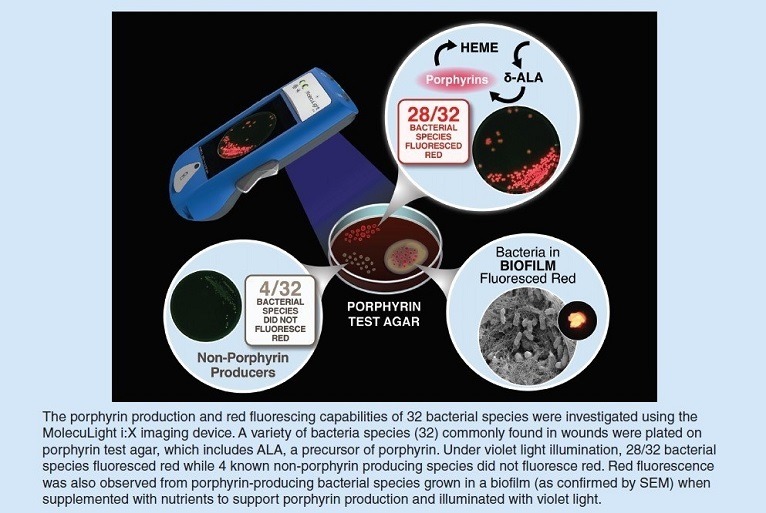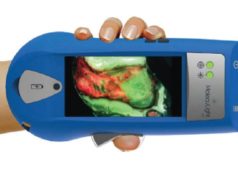
MolecuLight has announced the publication of “In vitro detection of porphyrin-producing wound bacteria with real-time fluorescence imaging” in Future Microbiology. The peer-reviewed paper describes the results of an extensive in vitro validation study using the MolecuLight i:X fluorescence imaging system to detect common wound pathogens.
In this study, the porphyrin production and red fluorescing capabilities of 32 common bacterial species were investigated in planktonic (free floating) and biofilm bacteria cultures using the MolecuLight i:X fluorescence imaging device.
When provided with appropriate nutrients, 28 of the 32 porphyrin-producing bacterial species produced red fluorescence when illuminated with the MolecuLight i:X. Red fluorescence was also observed from porphyrin-producing bacteria in biofilms.
The results clearly validate that the MolecuLight i:X fluorescence imaging device can detect red fluorescence from both planktonic and biofilm bacterial cultures and confirm that porphyrin production is the main biological source of red fluorescence detected from many clinically relevant bacteria.
“This is the first published study to report detection of red fluorescence under MolecuLight i:X violet light illumination from bacteria confirmed to be in biofilm,” says Monique Rennie, director of scientific affairs, MolecuLight, and co-author of the paper.

“This is an exciting finding as the ability to visualize the majority of wound pathogens, as well as biofilm in the clinical setting in real-time, is not possible with current standard of care techniques in wound care.
“Bacterial biofilms are estimated to be present in more than 70% of chronic wounds. Biofilms delay healing and can be up to 1000-times more resistant to antimicrobials than planktonic bacteria. Guidelines instruct clinicians to mechanically disrupt biofilm so that their antibacterial treatments can be effective, but without point-of-care diagnostic feedback on bacteria and biofilm location clinicians are working without a map.”
According to the author, safe, non-contact fluorescence imaging using the MolecuLight i:X allows clinicians, at the point-of-care, to visualise the presence, location and load (>104 CFU/g) of bacteria in wounds, including bacteria in biofilm per these published in vitro findings.
“Our growing body of clinical evidence demonstrates the significant improvement in patient outcomes that are being generated as a result of this new point-of-care imaging capability,” she concluded.











